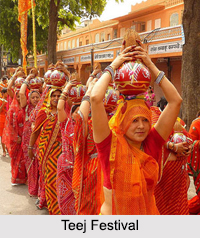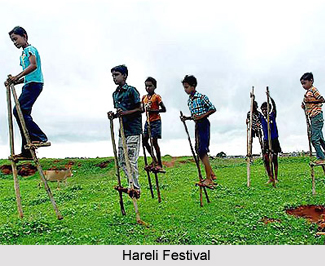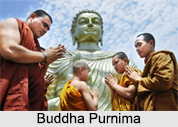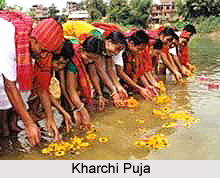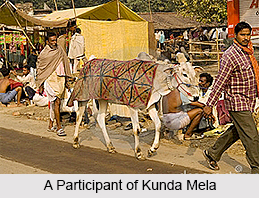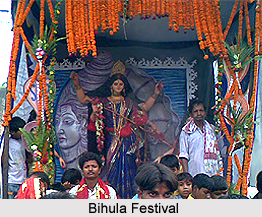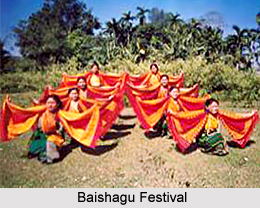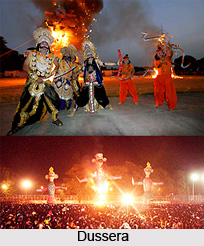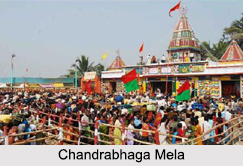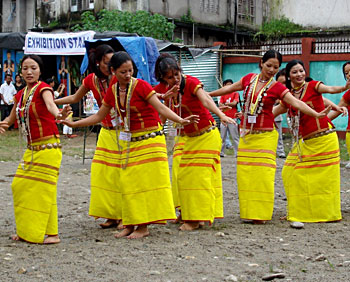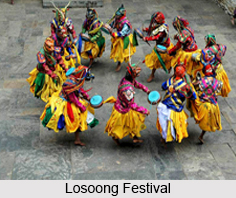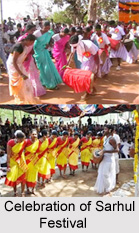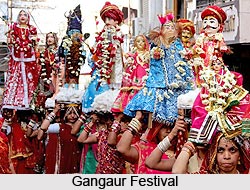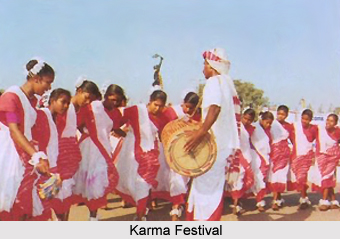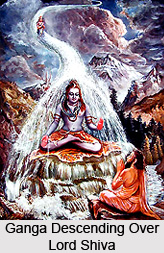 Legend of Ganga Dussehra states the events, as per Indian mythology, which led to the initiation of its celebration. It narrates the tale of King Sagara, belonging to Ikshvaku dynasty, who ruled over Ayodhya and had two queens namely Keshani and Sumati. Neither of the queens was able of bearing a child. Thus the king performed severe austerities so that his wives could produce sons. Later Queen Keshani gave birth to a son named Asmajas and Sumati bore 60,000 sons. For declaring his suzerainty over the neighbouring kingdoms, King Sagara performed the Ashvamedha sacrifice. As per the custom, the sacrificial horse was set free for wandering in the neighbouring kingdoms. A battle ensued if the horse was caught and the consequence of the battle decided the winner. The horse was followed by 60,000 sons of King Sagara. When it entered a cavern where sage Kapila was performing meditation, they followed course. On being unable to find the horse in cavern, they assumed that the horse was captured by Kapila. As Kapila was a sage, they did not kill him but began creating disturbances in his meditation. As a result Kapila got annoyed and burnt the 60,000 sons of Sagara with a curse.
Legend of Ganga Dussehra states the events, as per Indian mythology, which led to the initiation of its celebration. It narrates the tale of King Sagara, belonging to Ikshvaku dynasty, who ruled over Ayodhya and had two queens namely Keshani and Sumati. Neither of the queens was able of bearing a child. Thus the king performed severe austerities so that his wives could produce sons. Later Queen Keshani gave birth to a son named Asmajas and Sumati bore 60,000 sons. For declaring his suzerainty over the neighbouring kingdoms, King Sagara performed the Ashvamedha sacrifice. As per the custom, the sacrificial horse was set free for wandering in the neighbouring kingdoms. A battle ensued if the horse was caught and the consequence of the battle decided the winner. The horse was followed by 60,000 sons of King Sagara. When it entered a cavern where sage Kapila was performing meditation, they followed course. On being unable to find the horse in cavern, they assumed that the horse was captured by Kapila. As Kapila was a sage, they did not kill him but began creating disturbances in his meditation. As a result Kapila got annoyed and burnt the 60,000 sons of Sagara with a curse.
After the elapse of ages the great grandson of Sagara, named Bhagiratha, once came across the bones of his dead ancestors. He wished to perform the `shraddha` of his ancestors but the ceremony was not feasible due to unavailability of water. During that period the country was encountering severe draught as Agastya had drunk all the waters of the ocean. Thus Bhagiratha prayed to the Creator, Brahma, and pleaded him to end the draught. Brahma in turn asked him for praying to Lord Vishnu who was the Preserver of the earth to allow the heavenly Ganga for descending to the earth. Ganga, in fact, issued from his big toe. Lord Vishnu agreed to the prayers of Bhagiratha but also asked him to request the third member of the Hindu trinity of Gods, Lord Shiva, for allowing the torrential rain, before coming down to earth, fall over his head. This was asked because if the extremely forceful river descended on the earth unchecked, the earth might split up with her fall.
Lord Shiva also agreed to this and received the enormous weight of the cascading Ganga over the hair piled high on his head. The river while meandering through the labyrinth of his hair slowed down, losing its force and progress. It then came down gently to the Himalayas and proceeded gradually towards the plains pleasing the parched earth with its water. This is the reason for which the anthropomorphic image of Ganga is depicted in the matted hair of Lord Shiva, who is also known as Gangadhara. The effort of Bhagiratha was highly praised by his ancestors and all the Gods. It has been termed as `Bhagiratha`s Prayatna` which signifies doing a noble work despising all odds.
